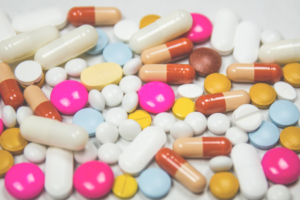Pharmaceutical Companies Invest in Indigenous Communities
 Biopiracy, the act of expropriating a resource from a foreign land and profiting from it, has been a normal practice for pharmaceutical companies and governments for many years. Medicinal compounds with vital medicinal benefits stole from indigenous and impoverished areas without reparations/royalties in exchange. Invasive countries reap millions of dollars from biopiracy. In the process, they strip irreplaceable compounds from populations that fiercely depend on them. Many of these poorer countries lack the financial strength to fund analysis of plants for medicinal value. This analysis can widen the research gap between developing countries and the industrialized world even further. In an effort to reconcile these past injustices and inequalities, some pharmaceutical companies and research institutes have pledged funding to facilitate the growth of the medicinal drug industry in indigenous areas.
Biopiracy, the act of expropriating a resource from a foreign land and profiting from it, has been a normal practice for pharmaceutical companies and governments for many years. Medicinal compounds with vital medicinal benefits stole from indigenous and impoverished areas without reparations/royalties in exchange. Invasive countries reap millions of dollars from biopiracy. In the process, they strip irreplaceable compounds from populations that fiercely depend on them. Many of these poorer countries lack the financial strength to fund analysis of plants for medicinal value. This analysis can widen the research gap between developing countries and the industrialized world even further. In an effort to reconcile these past injustices and inequalities, some pharmaceutical companies and research institutes have pledged funding to facilitate the growth of the medicinal drug industry in indigenous areas.
Berkeley and Samoa
In 2004, the University of California at Berkeley struck a deal with the government of Samoa, a small Pacific Ocean island nation. The university will share royalties from the highly revolutionary and precious compound prostratin, native to the Samoan mamala trees. It was discovered the drug was effective in treating HIV/AIDS by flushing the virus out of reservoirs in the body. The university pledged to equally split all revenues generated from the drug. It was used commonly on the island to treat hepatitis. After isolating the genes responsible for producing the drug in the tree, the researchers were able to carry out microbial production.
National Cancer Institute and Samoa
Three years prior, the National Cancer Institute (NCI) issued a license to the AIDS Research Alliance (ARA) to conduct research on the drug prostratin. The NCI exclusively patented this. The methodology behind the research is significantly different from Berkeley’s, as it does not rely on gene sequencing. The percentage of total royalties returned to the island is 20%. This is much lower than the charitable cut Berkeley would offer in the future.
However, this partnership was highly influential in staging the blueprint for American companies to share their copious wealth with the lands they took from. Much of the revenue returning to Samoa continues to be funneled into villages. In addition, it provides healers on the island with more sophisticated equipment and labs. In congruence with the deal, there will be over $500,000 of combined value to the construct water tanks, a medical clinic, three schools, a trail system and a tourist walkway from which the village would keep all revenue.
Merck & Co. and Costa Rica
In 1991, Merck & Co. is one of the pharmaceutical companies that sought to turn obscure compounds into gainful products in the agriculture and pharmaceutical markets. It extended a two-year deal to the nonprofit biodiversity institute in Costa Rica INBio. This entailed the exchange of plant and insect samples for $1 million. This was a mutually beneficial investment. Costa Rica was looking for donors in the private sector to help preserve its tropical and sub-tropical forests. There are ethical concerns surrounding the usage of said investment in building more commercially viable tourist attractions instead of natural preserves. However, regardless of Costa Rica’s money management, the company’s investment was nothing short of magnanimous.
ICBG and Coiba
The island of Coiba, 12 miles off the coast of Panama, was designated as a national park in 1991. It drew much interest in its coral reefs in 2005 when scientific research suggested that they contained an abundance of new species with medicinal and commercial potential. By far, the most promising discovery was octocoral, from which anti-malarial properties can be extracted. Following these exciting developments, the International Co-Operative Biodiversity Groups (ICBG) invested millions in building scientific infrastructure on the mainland of Panama. For instance, testing and processing sites for potential medicinal compounds.
The collaboration pledged to distill at least half of all profits into trust funds. The trust funds design to protect Coiba from internal and external environmental hazards. The profit will also go to the institutions that aided the project. A biological research station was built on the island. The security systems programmed will eradicate colonists and fisherman that could disrupt the ecosystem. ICBG has been successful in identifying and analyzing medicinal compounds in many other countries including Suriname, Vietnam and Madagascar.
These examples of corporations reconciling past exploitation of resources are certainly worth celebrating. However, there is work left to do. Pharmaceutical companies fund indigenous communities and spurring growth of their medicinal industries is still the minority. There is damage that has been left unrectified. These communities rely heavily on the resources insular to their area and supported by a well-funded and functioning infrastructure. In the fight to end global poverty, one of the first places to start is in the coniferous islands and peninsulas. It was once abundant in medicinal compounds but has since been plundered. It is important that the people in these areas can live healthy lives and benefit from the rich resources native to their land.
– Camden Gilreath
Photo: Flickr
